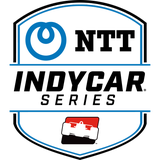
Verizon IndyCar Series reveals rule changes for 2017 season
The Verizon IndyCar Series has finalized several rule changes as the league is one month away from the start of its new season.
As Verizon IndyCar Series teams gear up for the 2017 season, the league is finishing up its own business. IndyCar announced a series of rule changes and schedule alterations on Monday, and several will be of interest to race fans.
The biggest news is that push to pass, the button which gives drivers an extra boost, is changing. Instead of each car having a set number of times they can push that button, now each car will be regulated by the amount of time they push it.
This means drivers can push the button as many times as they want, as long as the total usage time is no longer than 150 seconds (for St. Petersburg, Detroit and Sonoma) or 200 seconds (all other road/street races).
Push to pass is automatically set to run for 15 seconds, so the amount of boost that IndyCar teams are getting isn’t changing. It still amounts to ten full uses. But the time rule is in effect because drivers will now have the ability to turn off a push to pass in mid-use.
More from FanSided
This could be a game-changer if a driver can abort a push to pass that isn’t working and save it for later, or can make a pass quickly and store up extra boost.
IndyCar is also giving teams an extra set of Firestone reds at all road and street course events in 2017.
Each car will have to return one set of tires (either reds or blacks) after the weekend’s first practice session and a second set (of whichever type they didn’t return the day before) following the second practice session.
Speaking of practice sessions, the league is moving to standardize practice times for their road and street course races. Practices will now start at 11 a.m. and 3 p.m. local time, with each session lasting 45 minutes.
However, the league’s wording says this rule is for “most” road/street events, and it’s not known which ones will be different.
Last but certainly not least, IndyCar is making a slightly suspect move to condense track action at Phoenix, its new event in Missouri and in Detroit by changing up the qualifying procedures for the three stops.
Qualifying for the Phoenix Grand Prix (April 29) and Bommarito Automotive Group 500 (Aug. 26) will take place on the morning of race day, rather than the day before.
This means there will only be two days of on-track action for those events, on Saturday and Sunday, instead of the Friday through Sunday spread that’s become standard for IndyCar.
Meanwhile, the Dual in Detroit (June 3 and June 4) has gotten rid of the normal qualifying format entirely. Drivers will now qualify for each race in two groups, based on their practice times.
Most importantly that means a championship point will be up for grabs in each of the two groups, on each of the two days, so a driver can theoretically pick up two valuable points in qualifying.
“IndyCar consulted with our various stakeholders — teams, drivers, [and] event promoters — to refine the weekend schedules and generate the most value and excitement for everyone,” league exec Jay Frye said on Monday. “These changes are subtle but will enhance the race weekend experience for everyone involved, most particularly our fans.”
But is getting rid of one-third of a race weekend actually benefiting fans? One can see IndyCar’s thought process – that Friday practice sessions aren’t as big a draw as qualifying or race day – yet that’s still one less day venues can sell tickets, have vendors and host other programming.
And there will be less room on the schedule for those other programs and support events, such as additional racing series or driver Q&A’s, because the remaining two days will be packed even more tightly.
Not to mention the added strain that will be placed on race teams at Phoenix and Gateway, when they have to qualify and compete in the same day. Qualifying can be just as important as the race and pushing those two things together limits the amount of time that teams can turn information and equipment around from one to the other.
It also has potential impact on the TV schedule, because now instead of showing IndyCar on two days (with Saturday qualifying and Sunday racing), there will be just one day.
Will NBCSN have the airtime on Sunday to show both qualifying and the race? Or will IndyCar fans watching at home not get to watch qualifying because the network can’t accommodate both blocks of airtime in the same day? That’s a distinct possibility given how NBCSN is also home to a number of other sports, particularly running a considerable amount of NASCAR programming both live and scripted.
These new rule and schedule changes are understandable, but with the exception of push to pass and the extra level of strategy it will throw into the mix, feel like they could become complications for the 2017 season. And they’re short-notice changes as well given that the first league-wide test is this week at Phoenix with the first race just over a month away.
What do you think of IndyCar’s rule and schedule changes? Let us know your thoughts in the comments. The 2017 Verizon IndyCar Series season begins March 12 with the Firestone Grand Prix of St. Petersburg.
